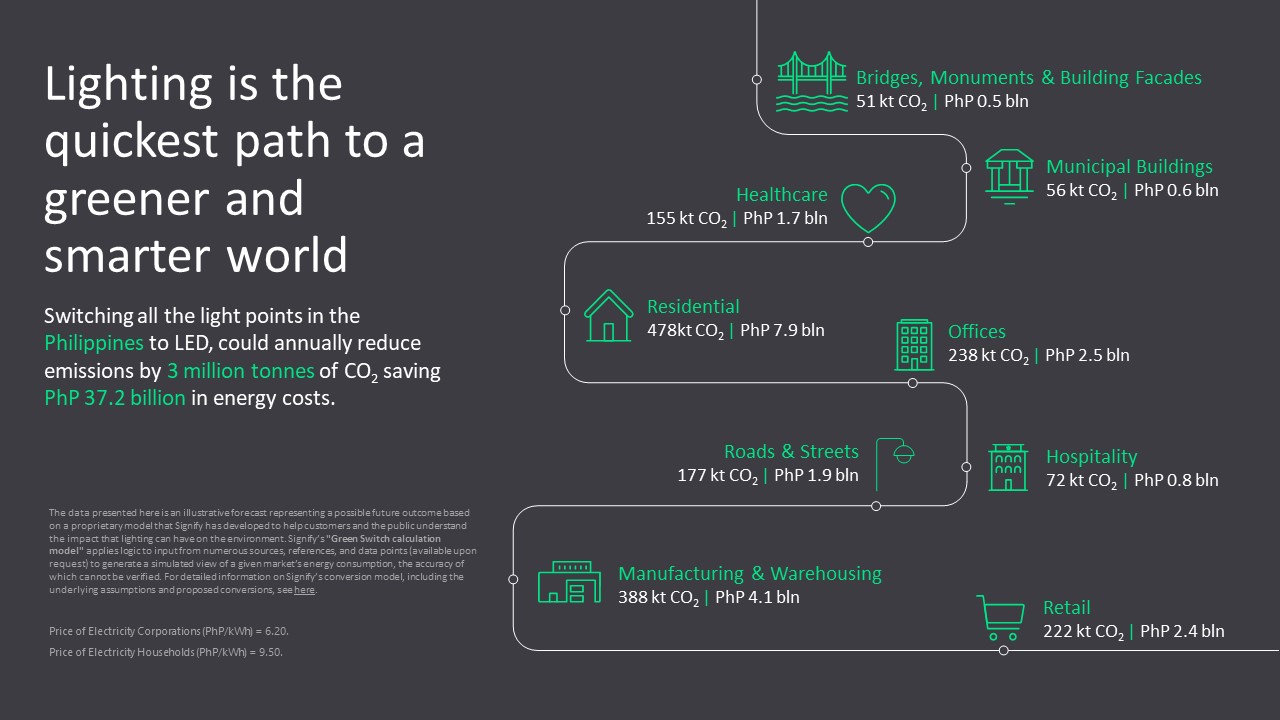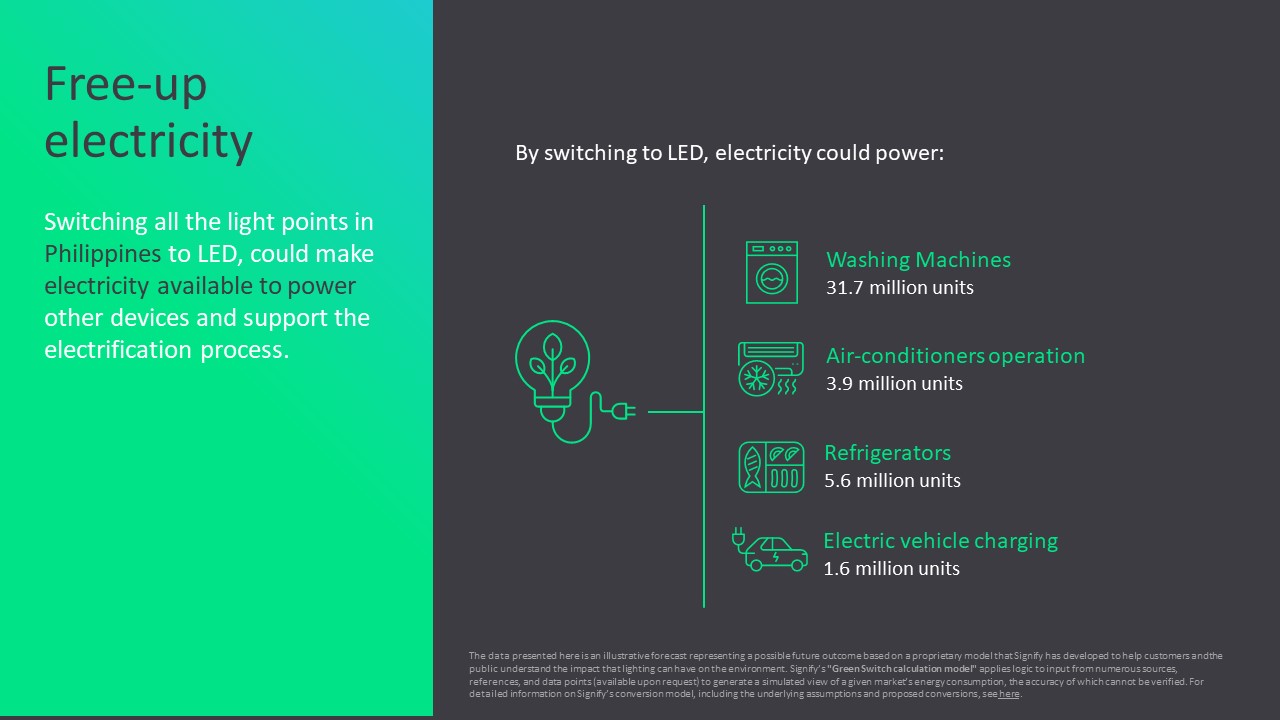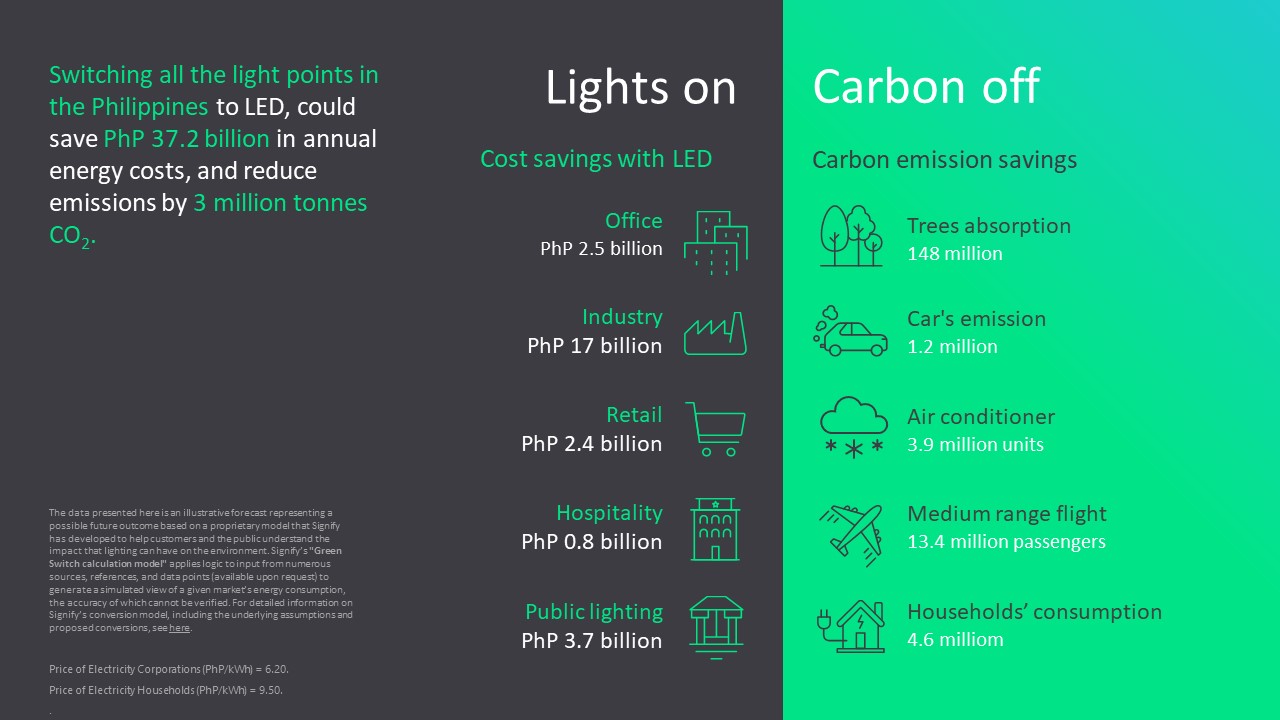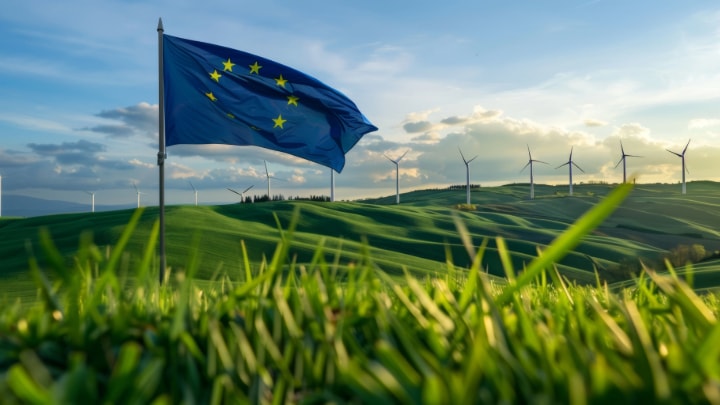Switching to LED and connected LED lighting is one of the quickest, most effective, and most often overlooked ways to make progress toward your sustainability goals.
The opportunity is enormous. Switching businesses and cities around the globe to LED lighting would eliminate 420 million tonnes of global CO2 emissions and save 870 TWh of energy—enough to power 380 million households for a year.
Financing, funding, and subsidies have been made available in many regions of the world to benefit municipalities, private companies, and citizens looking to shrink their energy and carbon footprints. Signify has created the Green Switch program to help organizations and individuals take advantage of these initiatives.










